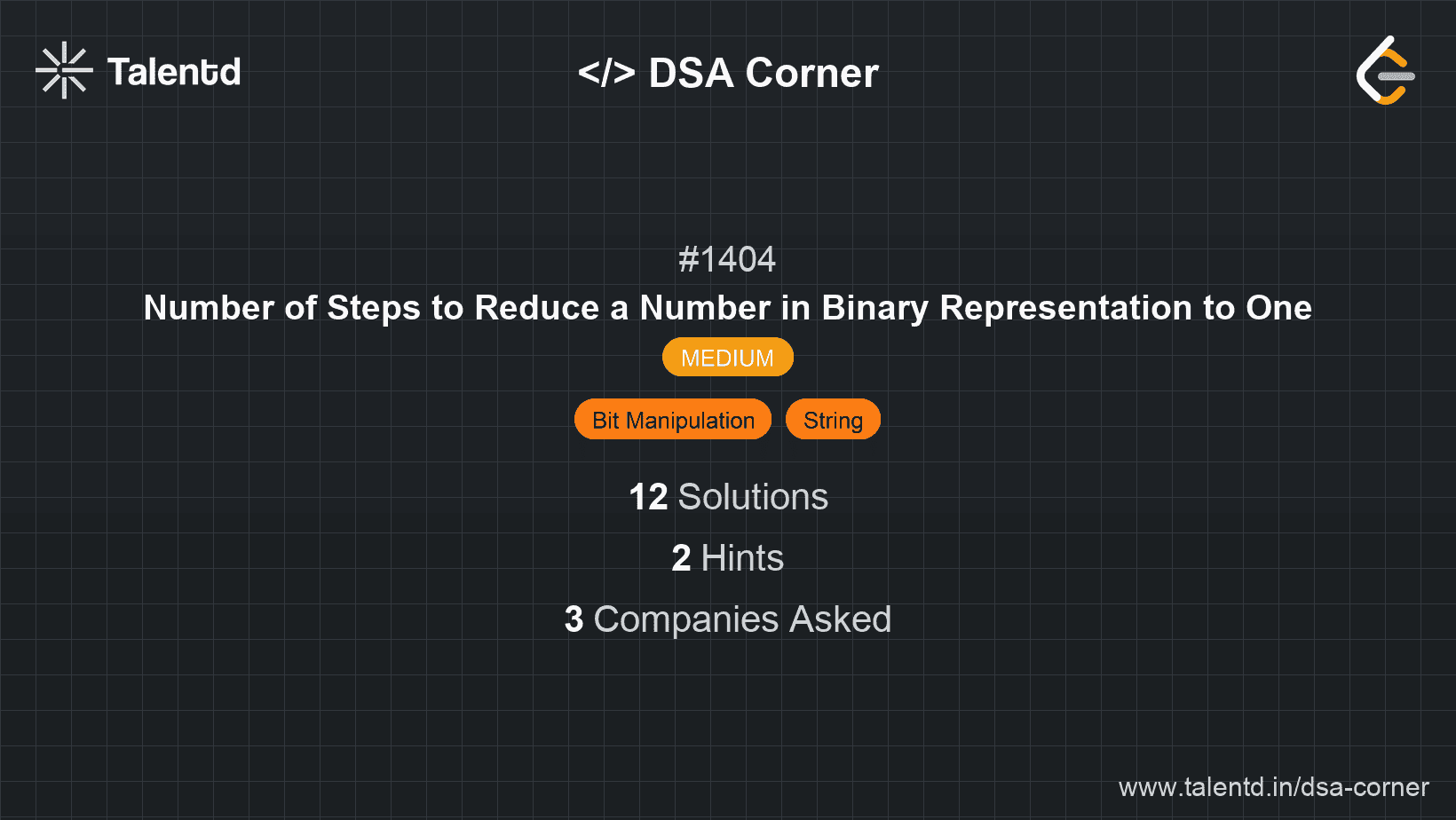
Sponsored
Sponsored
This approach involves simulating the reduction steps performed directly on the binary number string. We traverse the binary string backwards, simulating each step based on whether the current number is odd or even. Additionally, whenever we encounter a carry after incrementing an odd number, we propagate the carry to handle the necessary binary addition.
Time Complexity: O(n), where n is the length of the string s.
Space Complexity: O(1), only a constant amount of extra space is used.
1#include <stdio.h>
2#include <string.h>
3
4int numSteps(char *s) {
5 int steps = 0,
In C, we utilize standard string manipulation methods to implement the same simulation approach described. The loop goes through the binary string from the end towards the start, calculating the number of operations needed.
Convert the binary representation to a decimal integer, then simulate the operations using intuitive arithmetic operations. This approach avoids character-level string manipulations.
Time Complexity: O(n) for initial conversion, O(log m) for operations (where m is the integer value).
Space Complexity: O(1), after input conversion.
The Java solution uses parseLong to transform the binary string into a numeric form. A while loop subsequently processes each step according to defined parity-check operations.